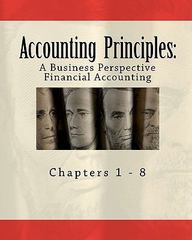Question
1.An economist estimates that a worker needs an hourly wage increase of$10 to assume a riskier job. This is an example of A. expressed preference
1.An economist estimates that a worker needs an hourly wage increase of$10 to assume a riskier job. This is an example of
A. expressed preference
B. revealed preference
C. risk aversion
D. none of the above
2. If an individual is indifferent between A) a treatment that has an 70% chance of a cure and a 30% chance of death and B) living with his condition, then quality of life with his condition must be
A. 0.6
B. 0.7
C. 0.8
D. 0.9
3.If I am willing to pay $100 to lower my probability of death by 1%, then my statistical value of a life is:
A. $100,000
B. $1,000,000
C. $1,000
D. $10,000
4.Study A compares Drug A to a placebo while study B compares Drug B to a placebo.If I use these two studies to infer the effect of Drug A relative to B, I am
A. Making an direct comparison
B. Performing a meta-analysis
C. Making a revealed comparison
D. Making an indirect comparison
5.If the total cost for care at a clinic is $10,000 and that clinic treats 10 patients, then
A. The marginal cost of care at that clinic is $50
B. The total cost of care at that clinic is $1,000
C. The average cost of care at that clinic is $1,000
D. The variable cost of care at that clinical is $5,000
Step by Step Solution
There are 3 Steps involved in it
Step: 1

Get Instant Access to Expert-Tailored Solutions
See step-by-step solutions with expert insights and AI powered tools for academic success
Step: 2

Step: 3

Ace Your Homework with AI
Get the answers you need in no time with our AI-driven, step-by-step assistance
Get Started


